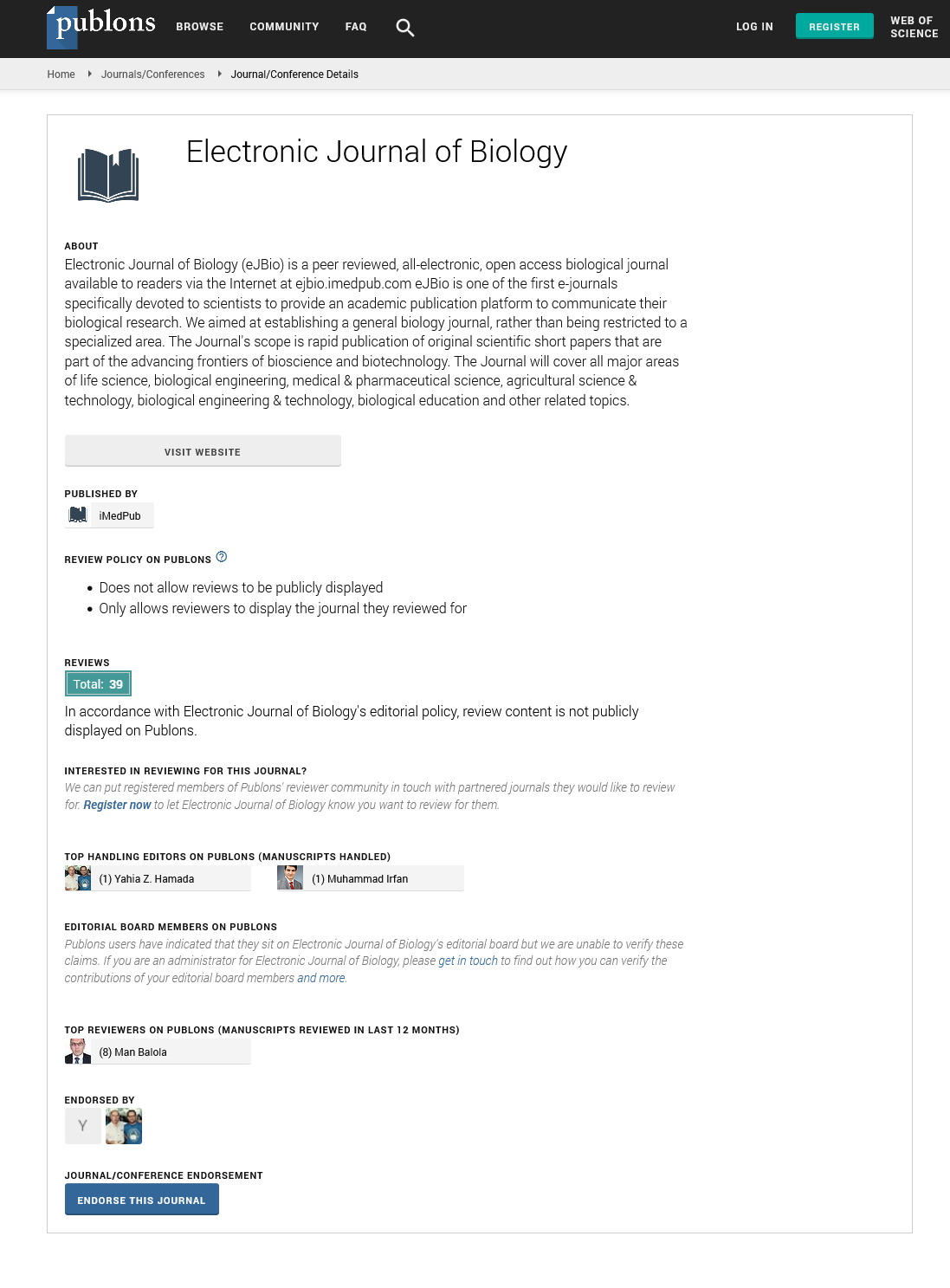Abstract
Assessing Antifungal Effects of Magnesium Oxide Nanoparticles on ÃÆâÃâââ¬Ãâà â Oxysporum f. sp. Lycopersic ÃÆâÃâââ¬ÃâÃÂ, Pathogenic Agent of Tomato
Coping with plant diseases and pests are among the most critical problems of agriculture sector. “oxysporum f. sp. Lycopersic”, theFusarium wilt agentin tomato plant, is one of the important plant pathogens, which enjoys a global significance due to it severe damages.Taking into account the mutation of pathogens and resistance against different pesticides and heavy costs of generating new and resistant races and also potential ability of nanoparticles, the antifungal effect of magnesium oxide nanoparticles on “oxysporum f. sp. Lycopersic” will be assessed in the present research. The nanoparticles used in the current research were chemically synthesized and its physical-chemical properties were measured and confirmed using double-beam visible-ultraviolet spectrophotometer (Model: TU-1901), X-ray diffraction device (Model: D/Max-RA) under CuKα emission, and transmission electron microscope (Model: TEM-200CX). Concentrations of 0.5%, 1%, and 2% of magnesium oxide nanoparticles were prepared with deionized water and their effect on the respective fungus was studied in liquid and solid growth media; the results were analyzed by means of Student t-test software at p-value<0.05. The results indicated that controlling effect increases with an increase in the administered dosage of nanoparticles, and, there exists a direct correlation between the administered dosage and controlling effect such that the concentration of 2% had the greatest effect in both liquid and solid growth media. The results are in accordance with other researches concerning effect of nanoparticles on microorganisms, and, it can be also interpreted that the cells are decomposed at a higher rate in presence of nanoparticles.
Author(s):
Marziye Aboli Parizi,Yazdan Moradpour, Masoud Negahdari, Ghasem Rahimi
Abstract | Full-Text | PDF
Share this

Google scholar citation report
Citations : 5001
Electronic Journal of Biology received 5001 citations as per google scholar report
Electronic Journal of Biology peer review process verified at publons
Abstracted/Indexed in
- Google Scholar
- China National Knowledge Infrastructure (CNKI)
- CiteFactor
- Electronic Journals Library
- Zoological Records
- WorldCat
- Proquest Summons
- Publons
- MIAR
- Openaccessarticles.com
- Secret Search Engine Labs
Open Access Journals
- Aquaculture & Veterinary Science
- Chemistry & Chemical Sciences
- Clinical Sciences
- Engineering
- General Science
- Genetics & Molecular Biology
- Health Care & Nursing
- Immunology & Microbiology
- Materials Science
- Mathematics & Physics
- Medical Sciences
- Neurology & Psychiatry
- Oncology & Cancer Science
- Pharmaceutical Sciences


